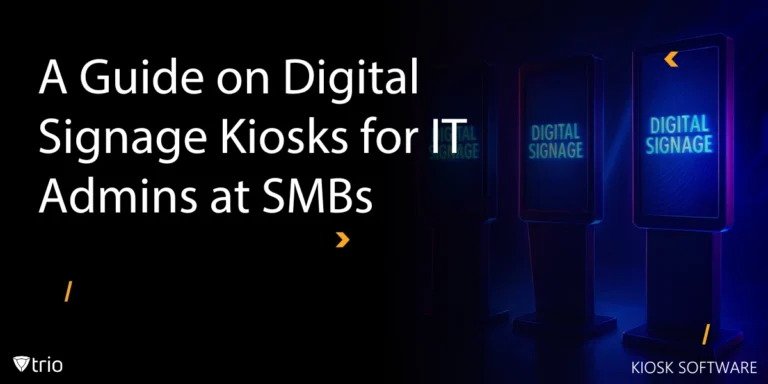Protecting sensitive data and systems is a top priority for any organization. With the average cost of a data breach reaching USD 4.88 million, as reported by IBM, the significance of robust cybersecurity measures becomes even clearer. IT admins are the gatekeepers, keeping everything secure and running smoothly. But what happens when they grant too much power to users? Granting excessive permissions can backfire, affecting not only security but also employee management, exposing your company to risks that are easy to overlook.
The Hidden Dangers of Excessive Permissions
When IT admins grant users access to more than they need, it can expose your organization to various risks. “Excessive permissions” here refer to users having access to systems, data, or controls beyond what they require for their role. This opens doors to accidental data leaks, misconfigurations, and potential security breaches.
It's easy to overlook these permissions, especially as companies grow or pivot. Rapid changes and constant updates in IT environments can make it challenging to manage who can access what. Imagine a scenario where a user is granted access to HR data—payrolls, employee records, private communications—simply to complete a minor task. Without proper controls, they may unintentionally expose this sensitive data, creating a security blind spot that puts the entire organization at risk.
Too much access can be a slippery slope. You don’t want to hand over the keys to your entire digital kingdom. This power must be managed wisely, as excessive permissions can expose your company to serious risks that are easily preventable. Let's explore 10 risks that come with granting too much access.
1- Data Breaches: A Real Threat
When users can freely access personal data and sensitive data, the chance of a company data breach skyrockets. Whether it's intentional or accidental, a single misstep can expose customer info, trade secrets, or financial records and cause immense damage to trust and brand reputation.

2- Limited Visibility & Monitoring: What You Can’t See Can Hurt
Excessive permissions mean tracking user activities becomes difficult. You’re faced with a sea of installed apps and changes, and not enough oversight. If users have too much access, accidental or malicious actions can stay under the radar longer, amplifying their negative impact on systems and data security.
3- Increased Error Margin: One Wrong Click
Human error is unavoidable. Dangerous permissions given to users elevate the risks of unintended mistakes—accidentally deleting files, misconfiguring systems, or triggering unintended data loss. Even a minor oversight can lead to significant downtime, affecting productivity and business operations.
4- Compliance Violations: When Permissions Cost You
Granting broad permissions without consideration can lead to compliance violations. Every permission request matters; excessive access may breach data protection regulations like GDPR or HIPAA. Failing to comply with these types of compliance rules can lead to hefty fines, legal trouble, and loss of client trust.
5- Overexposure to Ransomware: Permissions as a Gateway
Too much access can turn app requests into security hazards. If a user's account is compromised, ransomware can quickly spread across your network using their permissions. What starts as a small infection can rapidly grow into a full-scale lockdown, putting your data at risk.
6- Insider Threats: Trust vs. Access
Threats don't always come from external hackers. Users with unrestricted access can become an internal risk. Disgruntled employees or those tempted by financial gain might misuse their power to access or leak critical information, creating a security nightmare from within.

7- Business Continuity Threats: A Single Point of Failure
Granting excessive permissions to key users can become a weak link. If that user leaves, gets sick, or misuses their access, the company’s IT infrastructure may be compromised. The continuity of business operations is threatened, especially if no one else has proper permissions to take over quickly.
8- Privilege Escalation & Lateral Movement: Opening More Doors
Cybercriminals love excessive app permissions. When they find an over-privileged user account, they can abuse this privileged access and move laterally within the organization. This could give hackers complete control over critical systems, making it easier to manipulate data and access sensitive company information.
9- Unintentional Policy Violations: Navigating the Rules
Users with excessive permissions may unintentionally cross lines and manage app permissions without adhering to company policies. Such actions, though not always malicious, can violate data handling rules or security best practices, putting the company in hot water without anyone realizing it.
10- Inconsistent Access Management: A Tangled Web of Permissions
A proper permission manager is crucial for keeping access under control. When users have excessive permissions, access provisioning can become chaotic. Ad hoc changes and lack of clear boundaries lead to inconsistent practices and create gaps in security, making it difficult to track and enforce access policies effectively.
How to Avoid the Risks
To mitigate these risks, start by adopting a "least privilege" model—grant users access only to what’s necessary. Regularly audit permissions, checking who has access and why. Manage app permissions tightly, ensuring users aren't overstepping their needs. Multi-factor authentication is crucial to add an extra layer of security.
Training your staff on best practices and policies is equally important. Furthermore, an MDM solution can help manage permissions effectively, offering centralized control and monitoring. This way, you can keep permissions in check, reducing vulnerabilities and improving overall security for your organization.
Trio: A Smarter Way to Manage Permissions
MDM plays a pivotal role in controlling access, and that’s where our Trio steps in. Trio helps you manage permissions, ensuring users have access tailored to their roles. With features like real-time monitoring, permission controls, and security alerts, you can minimize risks effectively.
Trio’s intuitive design simplifies permission management, so you're not scrambling to track who has access to what. Want to see how it works? Try our free demo and experience firsthand how Trio can enhance your security and streamline your permissions.
Conclusion: Secure Permissions for a Safer Future
Balanced permissions are crucial to maintaining a secure and compliant IT environment. By evaluating access policies and managing them effectively, you protect your organization from the risks of excessive permissions. Take action today to ensure your systems are secure, your data is safe, and your business stays resilient.
Get Ahead of the Curve
Every organization today needs a solution to automate time-consuming tasks and strengthen security.
Without the right tools, manual processes drain resources and leave gaps in protection. Trio MDM is designed to solve this problem, automating key tasks, boosting security, and ensuring compliance with ease.
Don't let inefficiencies hold you back. Learn how Trio MDM can revolutionize your IT operations or request a free trial today!





